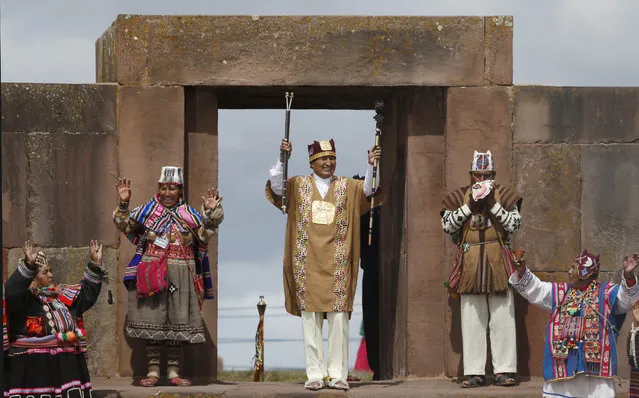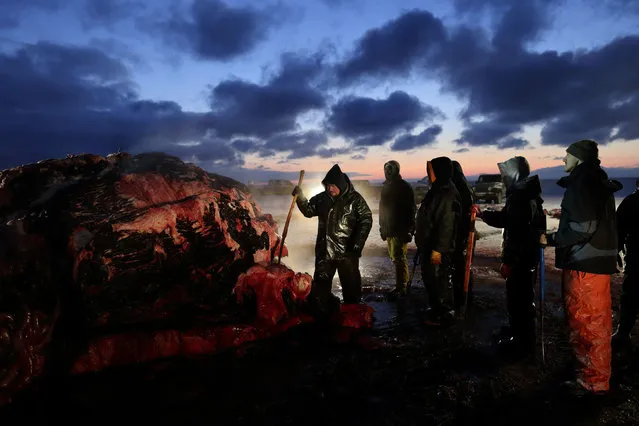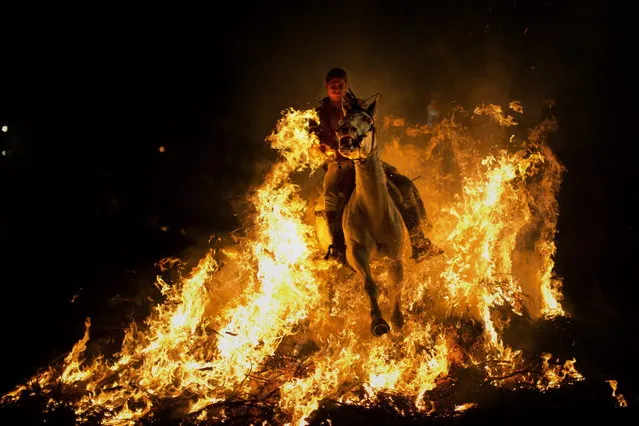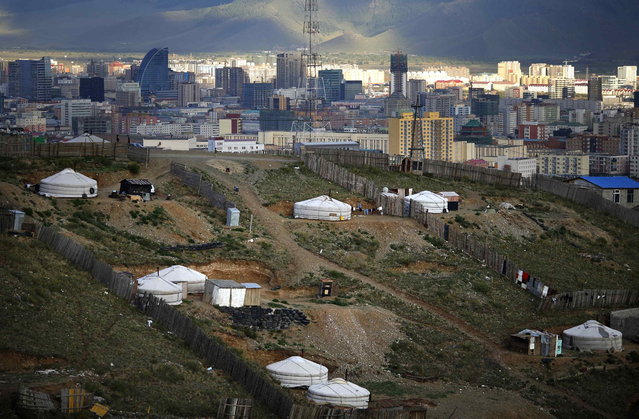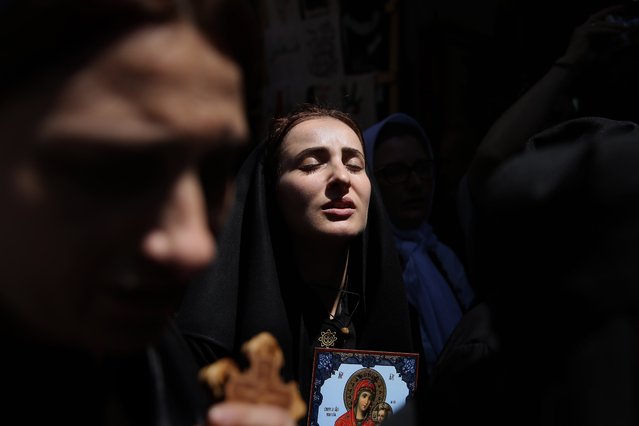
Orthodox Christian pilgrims from Abkhazia walk along the Via Dolorosa (Way of Suffering), during the Good Friday procession in Jerusalem's old city on April 29, 2016. Thousands of pilgrims took part in processions along the route where, according to tradition, Jesus carried the cross during his last days. (Photo by Gali Tibbon/AFP Photo)
30 Apr 2016 09:27:00,post received
0 comments


